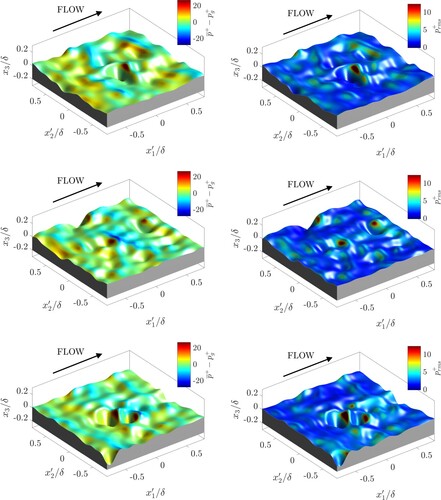Figures & data
Figure 1. Map of skewness-kurtosis combinations reported for irregular engineering rough surfaces (black circles) adapted from Jelly & Busse [Citation8]. The black line shows the boundary of Pearson's inequality (Equation1(1)
(1) ). The red squares show the skewness-kurtosis combinations investigated in the current study. The blue dotted line gives the boundary of possible skewness-kurtosis combinations for unimodal distributions (Equation3
(3)
(3) ).
![Figure 1. Map of skewness-kurtosis combinations reported for irregular engineering rough surfaces (black circles) adapted from Jelly & Busse [Citation8]. The black line shows the boundary of Pearson's inequality (Equation1(1) Ssk2−Sku+1≤0(1) ). The red squares show the skewness-kurtosis combinations investigated in the current study. The blue dotted line gives the boundary of possible skewness-kurtosis combinations for unimodal distributions (Equation3(3) Ssk2−Sku+189125≤0.(3) ).](/cms/asset/b5964f1b-4190-4a3f-a75f-a6c68895bbfd/tjot_a_2173761_f0001_oc.jpg)
Figure 2. Visualisations of the generated irregular rough surfaces. First row: Gaussian reference surface; second row: negatively skewed surfaces from left to right in order of increasing ; third row: positively skewed surfaces from left to right in order of increasing Ssk.
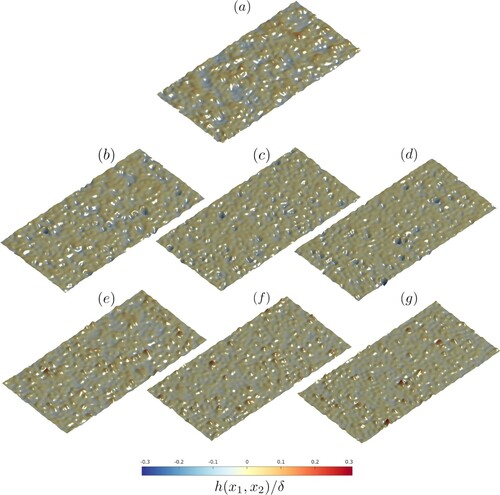
Figure 3. (a) Probability density functions and (b) cumulative distribution functions of of the surfaces shown in Figure . Line styles are given in Table . The inset plots show the same data with a logarithmic y-axis.

Table 1. Key topographical parameters of the surfaces investigated in the current DNS.
Table 2. Simulation parameters for the current rough-wall channel flow DNS.
Figure 4. (a) Mean streamwise velocity profile; the inset shows the local downwards shift, i.e. the difference between the smooth-wall and the rough-wall velocity profile vs the wall-normal coordinate; (b) Velocity defect profile; the inset shows the difference between the smooth-wall and rough-wall velocity defect profile. Line styles are given in Table .
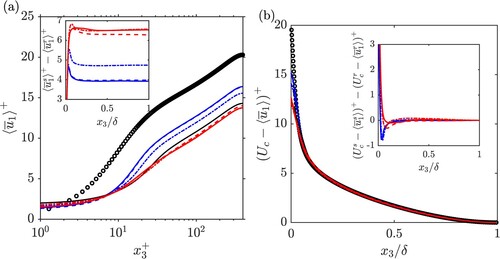
Figure 5. (a) Roughness function vs surface skewness. The black dashed line shows the fit given in Equation (Equation21(21)
(21) ). (b) Estimated equivalent sand-grain roughness normalised by rms roughness height vs skewness. The corresponding behaviour predicted by the empirical relationship (Equation22
(22)
(22) ) is also shown - blue line: negative skewness branch; red line: positive skewness branch; black cross: neutral skewness condition.
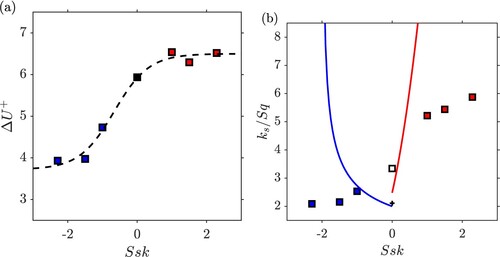
Table 3. Mean flow quantities measured for the present surfaces.
Figure 6. (a) Streamwise Reynolds stresses; (b) streamwise dispersive stresses; line styles are given in Table . The abscissae have been clipped to the range . The inset plots show the maxima as a function of the surface skewness Ssk.
![Figure 6. (a) Streamwise Reynolds stresses; (b) streamwise dispersive stresses; line styles are given in Table 2. The abscissae have been clipped to the range [−0.2,1.0]. The inset plots show the maxima as a function of the surface skewness Ssk.](/cms/asset/e2ac9b12-4a4f-4731-b880-c5d85af3bdd1/tjot_a_2173761_f0006_oc.jpg)
Figure 7. Visualisations of time-averaged streamwise velocity in plane . First row: Gaussian reference surface; second row: negatively skewed surfaces from left to right in order of increasing
; third row: positively skewed surfaces from left to right in order of increasing Ssk.
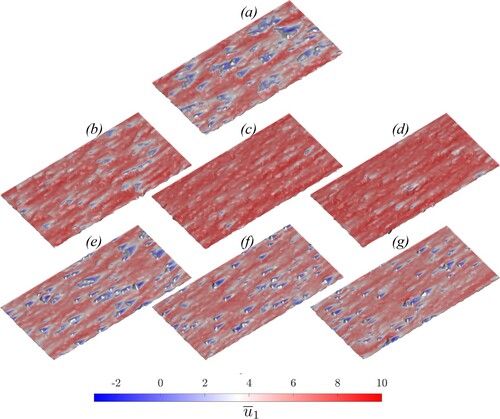
Figure 8. (a) Spanwise Reynolds stresses; (b) spanwise dispersive stresses; line styles are given in Table . The abscissae have been clipped to the range . The inset plots show the maxima as a function of the surface skewness Ssk.
![Figure 8. (a) Spanwise Reynolds stresses; (b) spanwise dispersive stresses; line styles are given in Table 2. The abscissae have been clipped to the range [−0.2,1.0]. The inset plots show the maxima as a function of the surface skewness Ssk.](/cms/asset/ff361b56-f975-4809-9f69-232e3d164024/tjot_a_2173761_f0008_oc.jpg)
Figure 9. (a) Wall-normal Reynolds stresses; (b) wall-normal dispersive stresses; line styles are given in Table . The abscissae have been clipped to the range . The inset plots show the maxima as a function of the surface skewness Ssk. For the dispersive stress case, the maximum values are based on the outer maxima (
).
![Figure 9. (a) Wall-normal Reynolds stresses; (b) wall-normal dispersive stresses; line styles are given in Table 2. The abscissae have been clipped to the range [−0.2,1.0]. The inset plots show the maxima as a function of the surface skewness Ssk. For the dispersive stress case, the maximum values are based on the outer maxima (max(〈u~3u~3〉(x3>0))).](/cms/asset/3775c3ab-5d8c-4ac4-b4db-f84179439048/tjot_a_2173761_f0009_oc.jpg)
Figure 10. (a) Reynolds shear stress; (b) dispersive shear stress; line styles are given in Table . The abscissae have been clipped to the range . The inset plots show the maxima as a function of the surface skewness Ssk.
![Figure 10. (a) Reynolds shear stress; (b) dispersive shear stress; line styles are given in Table 2. The abscissae have been clipped to the range [−0.2,1.0]. The inset plots show the maxima as a function of the surface skewness Ssk.](/cms/asset/b0027bae-679d-4d7f-b742-827d1120dae0/tjot_a_2173761_f0010_oc.jpg)
Figure 11. Fractional contribution of pressure drag vs (a) surface skewness and (b) Hama roughness function. The grey triangles show data for a pit-peak decomposed surface (,
) [Citation12] for comparison.
![Figure 11. Fractional contribution of pressure drag vs (a) surface skewness and (b) Hama roughness function. The grey triangles show data for a pit-peak decomposed surface (Ssk=±1.62, ESx=0.17) [Citation12] for comparison.](/cms/asset/3a47e6ab-469b-469c-907e-b69862b4f3e2/tjot_a_2173761_f0011_oc.jpg)
Figure 12. Surface pressure distributions for centred about the highest peak. Left column: time-averaged pressure on surface; right column: time-averaged pressure fluctuations at surface. From top to bottom: Ssk = +2.3, Ssk = +1.5, Ssk = +1.0, and Ssk = 0.0.
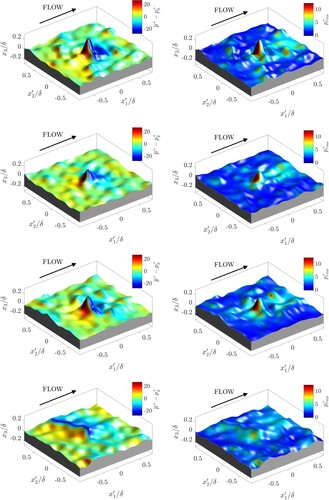
Figure 13. Surface pressure distributions for Ssk<0 centred about the highest peak. Left column: time-averaged pressure on surface; right column: time-averaged pressure fluctuations at surface. From top to bottom: Ssk = −1.0, Ssk = −1.5, and Ssk = −2.3.
